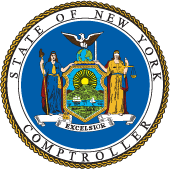With federal funding less predictable and New York’s senior population growing, the state must ensure its own investments are reaching older adults who need help. A new report from State Comptroller Thomas P. DiNapoli finds that even as state funding for senior services has increased, thousands remain on waitlists for in-home care, meals and other essential support, and data reporting by the New York State Office for the Aging (NYSOFA) makes it difficult to know who is being left behind or where.
“New York has an obligation to support seniors who need and qualify for in-home, meal or other support services,” DiNapoli said. “These critical services provide necessary care and help people remain in their homes and communities, while preventing more expensive institutional care. The Legislature has stepped up with more funding for the Office for the Aging, but with thousands still on waitlists and some funding going unspent, we need greater transparency and stronger tracking to make sure the state’s investment is truly reaching those who need it.”
New York’s Aging Population and Demand for Services
New York’s population of people aged 60 and over is projected to reach approximately 5.5 million by 2030. Nearly 70% of adults over 65 are expected to need some form of long-term care during their lifetime. Federal funding that typically supports a range of benefits for older New Yorkers, including Medicaid funding, has been reduced, which may further increase demand for state-funded services.
Many prefer to receive care at home rather than in institutional settings, but as the number of older New Yorkers increases, so does the strain on local agencies and service providers that older adults rely on. These services include in-home personal care, meal delivery, transportation, case management and support for family caregivers. In June, the state released a Master Plan for Aging Final Report (MPA) which assessed New York’s services for older adults and made recommendations to improve them. This report found that a primary issue in meeting the needs of older New Yorkers will be the availability and adequacy of the direct care workforce.
NYSOFA Funding and Access Challenges
State funding for NYSOFA programs increased over 88%, or $114 million, in the New York state budget for State Fiscal Year (SFY) 2025–26 when compared to SFY 2018–19. This funding includes support for the Expanded In-Home Services for the Elderly Program (EISEP) and other core services provided by local aging agencies.
The demand for NYSOFA services has exceeded the availability, meaning seniors who would otherwise qualify for services are unable to access them. In recognition of the demand, the state has increased funding to expand access to services like personal care and meals for older adults. Yet thousands remain on waitlists, and some funds were not spent, raising questions about whether the state’s investment is delivering its intended results.
Limited Public Reporting and Transparency
In 2023, DiNapoli released an audit that found NYSOFA did not consistently monitor local agencies or issue guidance on tracking and reporting waitlists. DiNapoli’s new report notes that some data on participation and funding, including allocations for in-home services, is not consistently available.
NYSOFA does not publicly report the information needed to assess the effectiveness of in-home services or the use of unmet need funding, including:
- Waitlist numbers by county and program;
- How much funding each local agency receives and spends on in-home services; and
- How many eligible older adults remain underserved.
Without this information, it is difficult to determine where services are falling short or how effectively taxpayer dollars are being used. DiNapoli’s report recommends improving the consistency and transparency of service and funding data, as well as publicly reporting county level waitlists.
Report
New York’s Support for Aging New Yorkers
Related Reports & Audits
New York State Office for the Aging: Monitoring of Select Programs
New York State Office for the Aging: Monitoring of Select Programs (Follow-Up)
Office for the Aging: Long-Term Care Ombudsman Program
Office for the Aging: Long-Term Care Ombudsman Program (Follow-Up)
